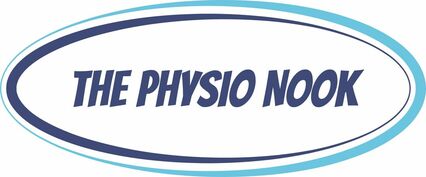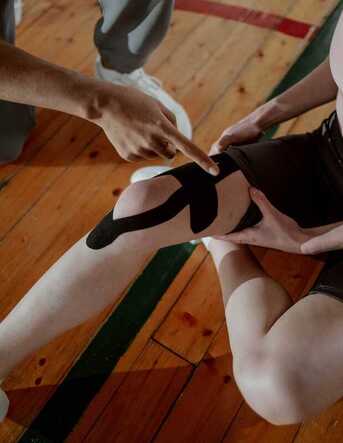Osgood Schlatter's disease- knee pain in adolescents
Osgood Schlatter's Disease is a tibial tuberosity apophysitis, which is inflammation at the site of the tibial tuberosity growth plate, where the tendon from the patella attaches. It is a quite debilitating knee injury that occurs in young active children or adolescents.
Symptoms of Osgood Schlatter’s Disease include…
- Local pain, swelling and tenderness over the tibial tuberosity at the attachment of the patellar tendon;
- Pain increasing during exercise (running, jumping) or with direct contact, such as in kneeling;
- Climbing stairs, squatting and kneeling may be painful;
- Quadriceps weakness can be present in chronic cases;
- Bilateral symptoms occur in 20-30% of cases.
- The apophysis may be enlarged in later stages, appearing as a lump that is tender in its active phase.
What Causes Osgood-Schlatter's Disease?
Strong repetitive quadriceps contractions are thought to cause a traction force on the tibial tuberosity, disrupting the immature bone. There is a higher incidence in active children during the adolescent growth spurt, with the most prevalent age groups at risk being boys aged 11 to 15 years, and girls aged 8 to 13 years.
Children are most susceptible to Osgood-Schlatter's disease when their bones are in the apophyseal stage of development, prior to full maturity. During this phase the apophysis is unable to withstand high tensile forces. When presented with strong, repetitive muscle contractions, micro-fractures occur at the immature area. The separation results in symptoms typical of Osgood Schlatter's disease, as well as irregular bone growth that explains the enlarged tibial tuberosity afterwards.
Another reported cause for Osgood Schlatter’s disease has been the lack of growth of the quadriceps in comparison to the femur. During a growth spurt in a child, the lengthening of the muscle is unable to keep up with the rapid lengthening of the femur, which also increases tensile force on the tibial tuberosity.
So how do we best treat it?
Physiotherapy assessment and treatment is of proven benefit for Osgood Schlatter's disease sufferers. About 90% of patients respond well to non-operative physiotherapy treatment, but research has stated that symptoms may come and go for 12-24 months before complete resolution. (Gholve et al 2007).
Recommended interventions include relative rest; infrapatellar bracing or strapping; ice and anti-inflammatory medication or gels; general lower limb stretches and strength/stabilisation exercises; and biomechanical correction with strapping and/or orthotic therapy. We commonly employ all of these methods here at The Physio Nook.
I hope this summary will help you or someone you know. As always, we are here at The Physio Nook to help out with any musculoskeletal disorders you may have, knees or otherwise! Feel free to call us, email, or drop in for a great service.
Paul Woodward
Principal Physiotherapist
The Physio Nook.
- Local pain, swelling and tenderness over the tibial tuberosity at the attachment of the patellar tendon;
- Pain increasing during exercise (running, jumping) or with direct contact, such as in kneeling;
- Climbing stairs, squatting and kneeling may be painful;
- Quadriceps weakness can be present in chronic cases;
- Bilateral symptoms occur in 20-30% of cases.
- The apophysis may be enlarged in later stages, appearing as a lump that is tender in its active phase.
What Causes Osgood-Schlatter's Disease?
Strong repetitive quadriceps contractions are thought to cause a traction force on the tibial tuberosity, disrupting the immature bone. There is a higher incidence in active children during the adolescent growth spurt, with the most prevalent age groups at risk being boys aged 11 to 15 years, and girls aged 8 to 13 years.
Children are most susceptible to Osgood-Schlatter's disease when their bones are in the apophyseal stage of development, prior to full maturity. During this phase the apophysis is unable to withstand high tensile forces. When presented with strong, repetitive muscle contractions, micro-fractures occur at the immature area. The separation results in symptoms typical of Osgood Schlatter's disease, as well as irregular bone growth that explains the enlarged tibial tuberosity afterwards.
Another reported cause for Osgood Schlatter’s disease has been the lack of growth of the quadriceps in comparison to the femur. During a growth spurt in a child, the lengthening of the muscle is unable to keep up with the rapid lengthening of the femur, which also increases tensile force on the tibial tuberosity.
So how do we best treat it?
Physiotherapy assessment and treatment is of proven benefit for Osgood Schlatter's disease sufferers. About 90% of patients respond well to non-operative physiotherapy treatment, but research has stated that symptoms may come and go for 12-24 months before complete resolution. (Gholve et al 2007).
Recommended interventions include relative rest; infrapatellar bracing or strapping; ice and anti-inflammatory medication or gels; general lower limb stretches and strength/stabilisation exercises; and biomechanical correction with strapping and/or orthotic therapy. We commonly employ all of these methods here at The Physio Nook.
I hope this summary will help you or someone you know. As always, we are here at The Physio Nook to help out with any musculoskeletal disorders you may have, knees or otherwise! Feel free to call us, email, or drop in for a great service.
Paul Woodward
Principal Physiotherapist
The Physio Nook.


